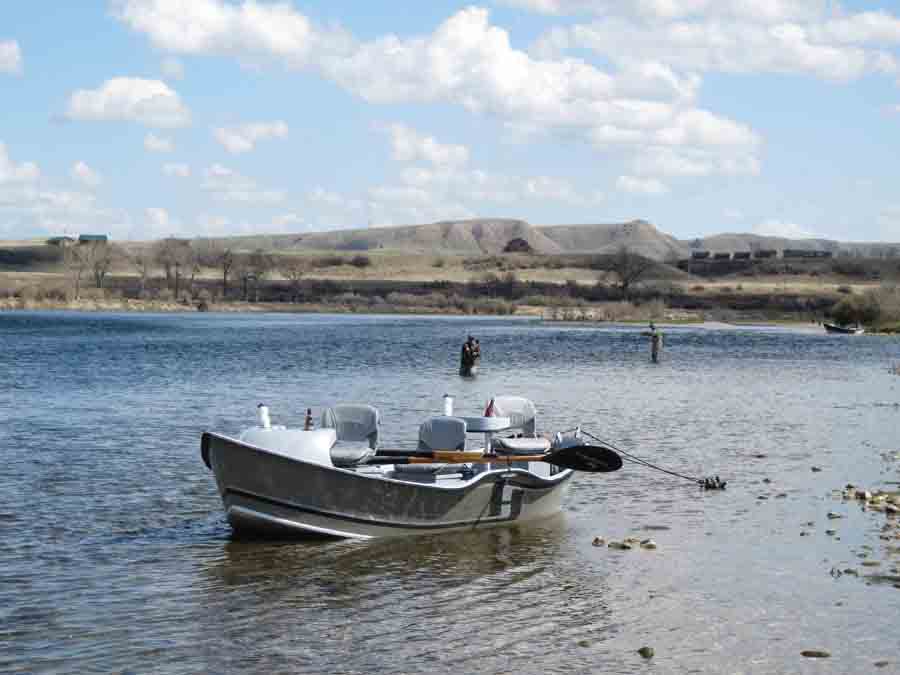Three Days in Spring

I’ve been guiding the last three days and thought you’d appreciate a more detailed fishing report. First of all, the fishing is good, as it almost always is this time of the year. Trout are feeding heavily on midges for the most part, and to a lesser extent on Baetis and sowbugs. I’ve pumped the stomachs of several fish, and the dominant midge pupa color was cream, with good numbers of black and brown pupa. Baetis nymphs were also well represented. Tie your Baetis nymphs thin and dark. The nymphs look black in your hand, but they are actually a dark olive color.
There is more moss than usual for this time of year. I’m not sure why, but it is a factor. There are a number of places where you have to fish the moss line, keeping the fly drifting over clean gravel rather than over moss beds themselves. Also, drifting moss makes nymph fishing difficult nine or ten miles downstream from Afterbay Dam. You’ll be doing a lot of moss slapping as you approach Bighorn Access. A couple of anglers have fished the river below Bighorn Access and they took several fish over 20 inches on streamers. The water clarity is great down there. However, the drifting moss was so bothersome; they won’t be fishing down there until it cleans up.
The dry fly fishing has been exceptional all spring. It was windy much of the time during the last three days, but the fish are determined to feed on the surface, and in between gusts we’ve been enjoyed some great fishing on midge clusters, single midges, and Baetis duns. Fish can be quite selective in slick water areas, but they can be quite easy to take in water where there’s a little chop and current speed. Regardless, if you’re a skilled angler and you can present the fly well, you should be very happy with the dry fly fishing. I will sum up the fishing on the river with this statement: This is an ANGLER’S river right now. The experienced fisherman will find the fishing to be outstanding; the novice or intermediate will have to work hard. Dry fly fisherman must be able to present the fly well and get a good drag-free drift. You have to figure out the trout’s rhythm and put the fly over him a number of times.
Most of the trout we took on the surface during the last three days were on the #18 CDC Midge Cluster, #22 Parachute Adams (black post), #20 Sipper Midge, and #20 Student. Top nymphs were the #18 Cream Midge Pupa, #18 Root-Beer Midge, and #18 Young’s Midge (brown body). The #18 Flash-Back Quill is still tough to beat for a Baetis nymph.